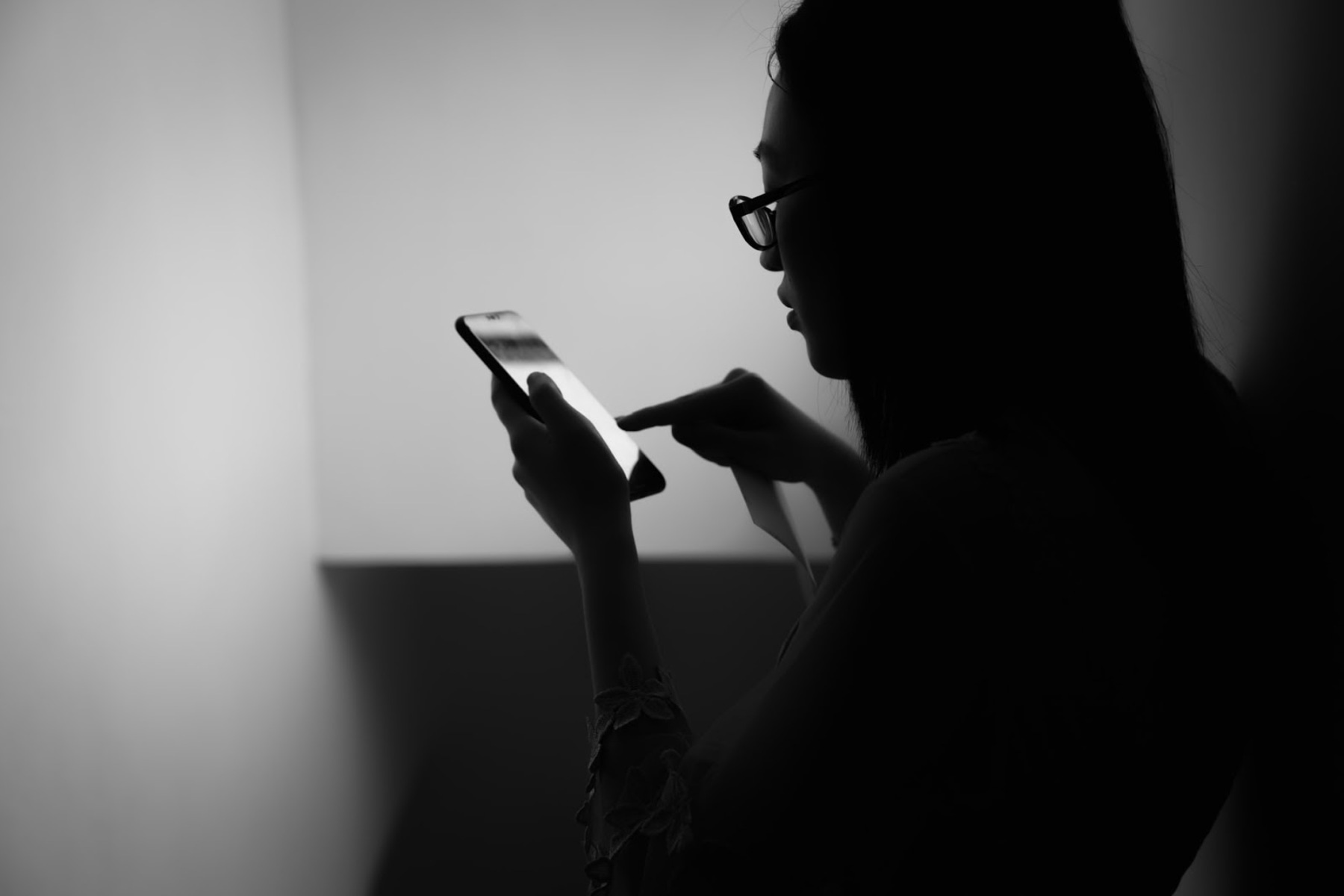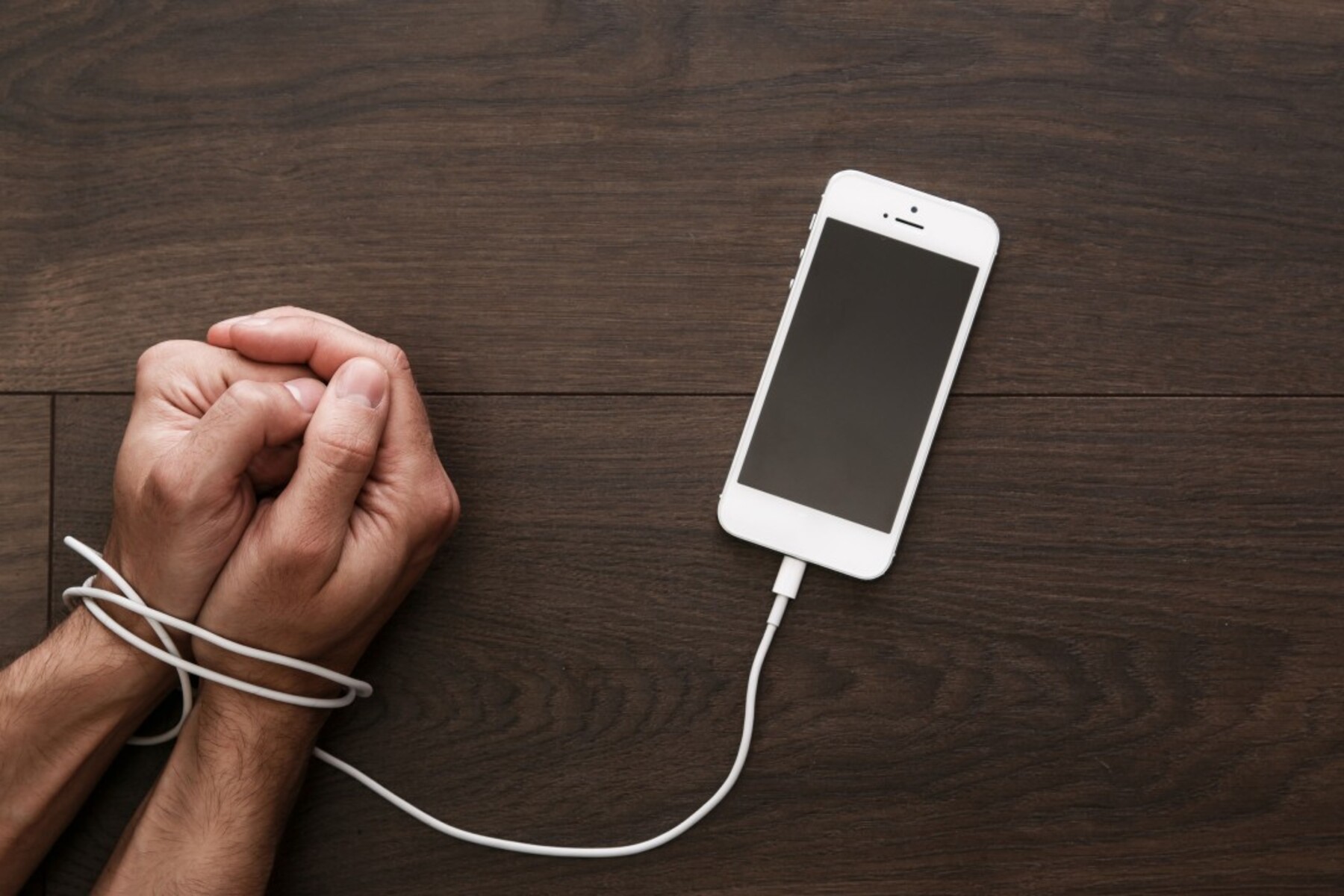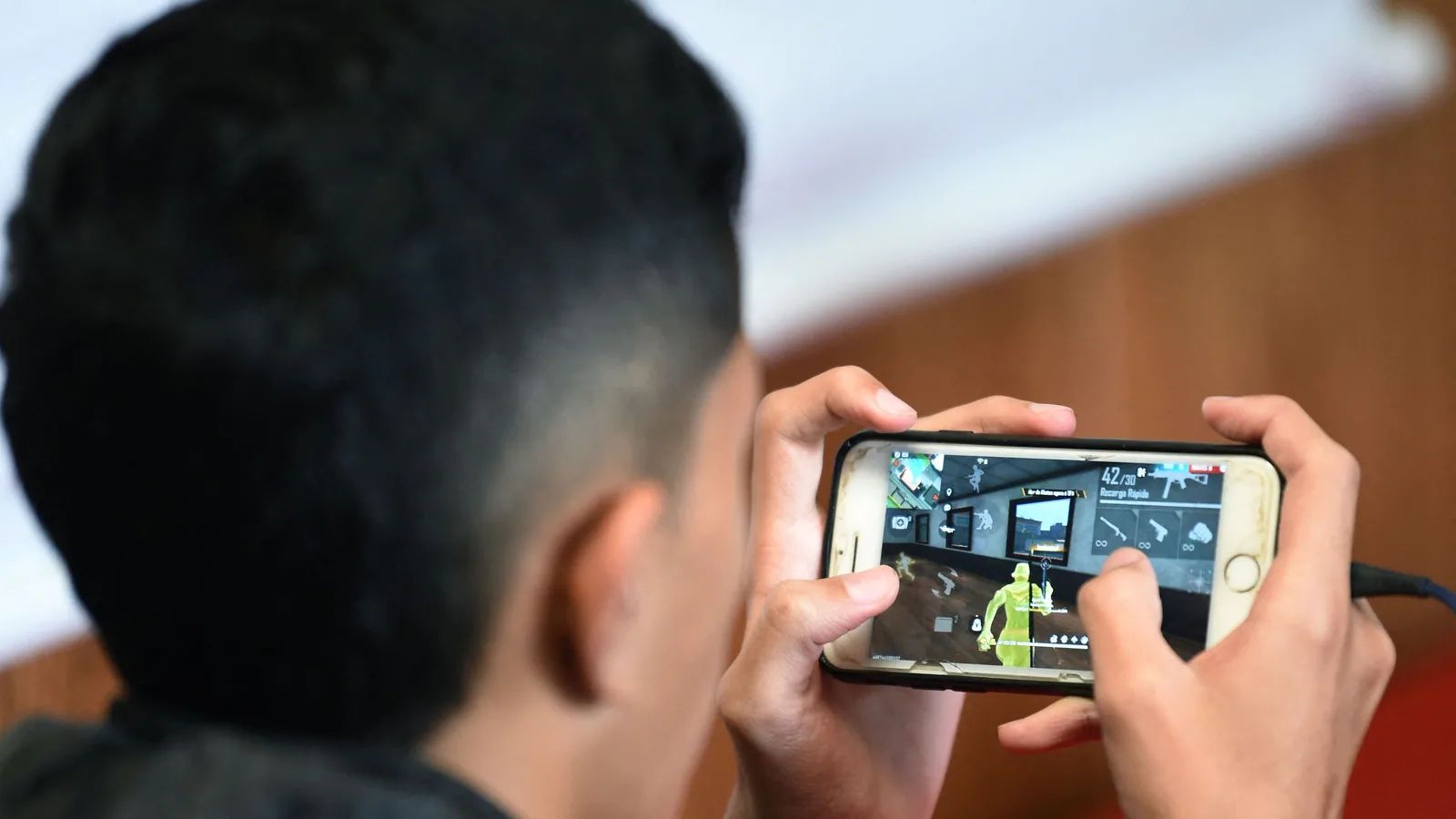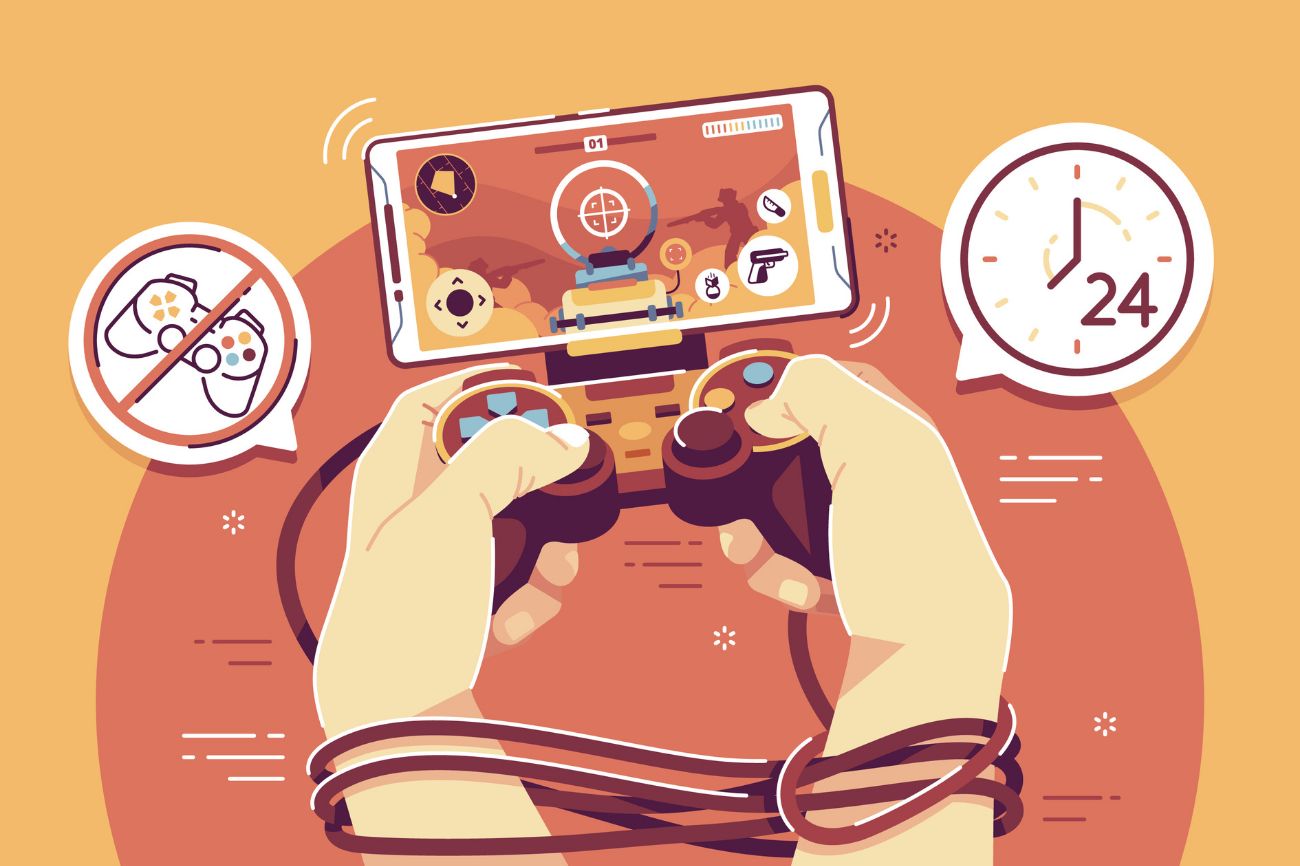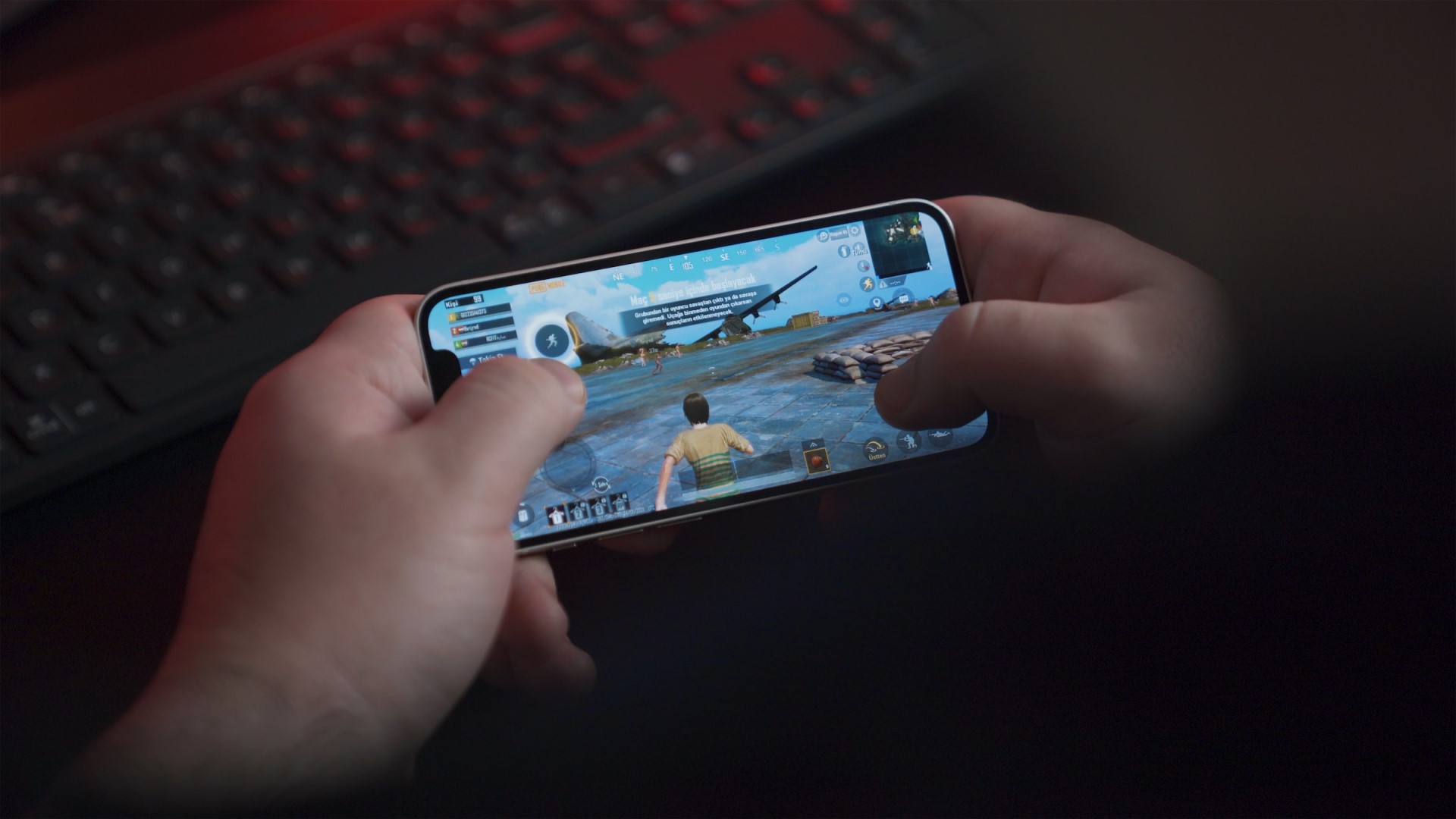Introduction
In today’s digital age, smartphones have become an indispensable part of our lives. These powerful devices enable us to stay connected, access information, and perform a myriad of tasks with just a few taps on the screen. However, with the increasing dependency on smartphones, many individuals find themselves struggling with smartphone addiction.
Smartphone addiction refers to a compulsive and excessive use of smartphones, which can have detrimental effects on both our physical and mental well-being. It is important to recognize the signs and indicators of smartphone addiction in order to address the issue effectively.
In this article, we will explore the different indicators of smartphone addiction. These indicators can be categorized into physical, psychological, and behavioral aspects, which provide valuable insights into the level and severity of addiction. By understanding these indicators, individuals can make informed decisions about managing their smartphone usage and reducing the negative impacts on their lives.
It is worth noting that while smartphones have revolutionized the way we live, work, and communicate, excessive dependence on them can be detrimental. Our aim is not to demonize smartphones but to shed light on the potential risks associated with excessive usage and to provide guidance on achieving a healthier balance.
Now, let’s delve into the various indicators of smartphone addiction and gain a deeper understanding of their implications.
Definition of Smartphone Addiction
Smartphone addiction, also known as nomophobia (the fear of being without a mobile phone) or problematic smartphone use, is a condition characterized by excessive and uncontrollable use of smartphones, leading to negative consequences in various aspects of an individual’s life.
While there is no official diagnosis for smartphone addiction in the DSM-5 (Diagnostic and Statistical Manual of Mental Disorders), it has been widely recognized as a modern behavioral addiction. Similar to other addictive behaviors, smartphone addiction involves a loss of control over smartphone usage, tolerance (the need for increased usage to achieve the desired effect), withdrawal symptoms when unable to access the device, and continued use despite negative consequences.
The addictive nature of smartphones stems from various factors. The constant connectivity, instant gratification, and the abundance of engaging apps and social media platforms contribute to the allure and compulsion of smartphone use. The convenience and versatility of smartphones make them highly accessible and easy to engage with, making it difficult for individuals to disconnect.
It is important to note that smartphone addiction can vary in intensity and manifestation from person to person. For some individuals, it may be mild and manageable, while for others, it can severely impact their daily functioning and quality of life.
It is also essential to distinguish between excessive smartphone use and addiction. Excessive use refers to spending a disproportionate amount of time on smartphones, whereas addiction involves a loss of control and negative consequences. It is common for individuals to use smartphones extensively for work, communication, or entertainment without being addicted. However, when smartphone use begins to interfere with important aspects of life such as relationships, work, academics, and physical and mental health, it warrants attention and intervention.
Understanding the definition of smartphone addiction is the first step in recognizing and addressing the issue. By being aware of the signs and symptoms of addiction, individuals can take proactive steps to regain control over their smartphone usage and maintain a healthier balance in their lives.
Physical Indicators
Smartphone addiction can have several physical indicators that may be observed in individuals struggling with excessive smartphone use.
One common physical indicator is digital eye strain or computer vision syndrome. Spending long hours on smartphones can strain the eyes, leading to symptoms such as dryness, irritation, blurred vision, and headaches. Additionally, the blue light emitted by smartphone screens can disrupt sleep patterns and contribute to insomnia.
Poor posture is another physical indicator of smartphone addiction. Constantly hunching over while using smartphones can lead to neck, back, and shoulder pain. This posture, commonly known as “text neck,” can cause muscle strain and spinal misalignments.
Repetitive strain injuries (RSIs) are also associated with excessive smartphone use. Frequent tapping, swiping, and typing on the small screen can lead to conditions such as carpal tunnel syndrome, tendonitis, and thumb pain. RSIs can cause discomfort, reduced mobility, and even long-term damage.
In addition to these physical indicators, smartphone addiction can also negatively impact general health and well-being. Excessive smartphone use can lead to a sedentary lifestyle, as individuals spend less time engaging in physical activities. Lack of exercise and movement can increase the risk of obesity, cardiovascular diseases, and other chronic health conditions.
It is important to be mindful of these physical indicators and take proactive measures to minimize their impact. Practicing proper ergonomics, taking regular breaks, and incorporating physical activity into daily routines can help mitigate the physical consequences of smartphone addiction.
Now that we have explored the physical indicators, let’s move on to the psychological indicators of smartphone addiction.
Psychological Indicators
Smartphone addiction not only affects our physical well-being but also has profound implications for our psychological health. There are several psychological indicators that can be observed in individuals struggling with smartphone addiction.
One common psychological indicator is a constant preoccupation with smartphones. Individuals may find themselves constantly thinking about their phones, anticipating notifications, and experiencing anxiety or restlessness when the device is out of reach. This preoccupation can interfere with concentration, productivity, and overall mental well-being.
Another psychological indicator is the experience of withdrawal symptoms when unable to access the smartphone. These symptoms can include irritability, anxiety, agitation, and a strong urge to check the phone. The inability to stay away from the device even for short periods can indicate a psychological dependency on smartphones.
Smartphone addiction can also lead to a decline in mental health. Excessive use and reliance on smartphones can contribute to feelings of loneliness, depression, and social isolation. The constant comparison to others on social media platforms can evoke feelings of inadequacy and low self-esteem.
Furthermore, smartphone addiction can disrupt sleep patterns and quality. The overuse of smartphones, especially just before bedtime, can interfere with the natural sleep-wake cycle and result in insomnia or poor sleep quality. This can further exacerbate mental health issues and contribute to feelings of fatigue, irritability, and difficulty concentrating.
It is essential to be aware of these psychological indicators and their potential impact on our well-being. Recognizing these signs can help individuals assess their smartphone usage and take steps to improve their mental health and overall quality of life.
Now, let’s move on to the next section, which explores the behavioral indicators of smartphone addiction.
Behavioral Indicators
Behavioral indicators are observable actions and patterns that can signify a person’s addiction to smartphones. These indicators provide valuable insights into how smartphone addiction manifests in individuals’ behaviors and daily routines.
One common behavioral indicator is excessive and prolonged smartphone usage. Individuals with smartphone addiction may spend hours scrolling through social media, playing games, or browsing the internet, often at the expense of other important activities and responsibilities. This excessive usage typically persists despite efforts to cut down or control smartphone use.
Another behavioral indicator is the inability to limit smartphone use in specific situations or environments. For example, individuals may find it challenging to refrain from using their phones during meals, social gatherings, or important work tasks. The constant need to check and respond to notifications can be disruptive and disrespectful to personal and professional relationships.
Escapist behaviors are also common among individuals with smartphone addiction. The constant engagement with smartphones can be a means of distraction and avoidance of real-life challenges, emotions, or responsibilities. This can lead to social withdrawal, neglect of personal commitments, and a decline in overall productivity.
Furthermore, individuals with smartphone addiction may experience a decreased ability to regulate usage. They may set goals to reduce smartphone use or implement time limits but struggle to adhere to them consistently. This lack of self-control and difficulty in managing behavior can further reinforce the addictive cycle.
It is important to recognize these behavioral indicators and their impact on our lives. By doing so, we can develop strategies and coping mechanisms to regain control over our smartphone usage and prioritize activities that contribute to our well-being and personal growth.
Now that we have explored the behavioral indicators, let’s move forward and discuss the impact of smartphone addiction on daily life.
Impact on Daily Life
Smartphone addiction can significantly impact various aspects of an individual’s daily life, leading to adverse consequences in personal, professional, and social domains. Understanding these impacts is crucial in recognizing the severity of the addiction and taking steps to mitigate its effects.
In personal relationships, smartphone addiction can disrupt communication and intimacy. Excessive screen time can divert attention away from loved ones, leading to feelings of neglect and detachment. Constantly checking smartphones during conversations or quality time can create barriers to building meaningful connections and can strain relationships.
Professionally, smartphone addiction can hinder productivity and concentration. The constant need to check notifications, browse social media, or engage in other smartphone-related activities can distract individuals from their work tasks. This can lead to decreased efficiency, missed deadlines, and diminished overall performance.
Moreover, the negative impacts of smartphone addiction can extend to one’s physical and mental health. The sedentary lifestyle associated with excessive smartphone use can contribute to weight gain, muscle weakness, and a higher risk of chronic diseases. The negative mental health effects, such as increased stress, anxiety, and depression, can further impact overall well-being.
In terms of time management, smartphone addiction can be a significant time drain. Excessive usage can lead to procrastination, as individuals prioritize their smartphones over tasks that require attention and focus. This can result in missed opportunities, unmet deadlines, and a decreased sense of accomplishment.
Socially, smartphone addiction can lead to a sense of disconnection from the physical world. Focusing on virtual interactions and online communities can lead to reduced face-to-face social interactions and a lack of engagement in real-life activities. This can contribute to loneliness, isolation, and a diminished sense of belonging.
Recognizing the impact of smartphone addiction on daily life is crucial in making a conscious effort to restore balance. By taking proactive steps to reduce smartphone usage, individuals can prioritize their relationships, work responsibilities, physical health, and overall well-being.
Now, let’s explore the consequences of smartphone addiction in more detail.
Consequences of Smartphone Addiction
Smartphone addiction can have a range of consequences that extend beyond the immediate impact on daily life. These consequences can manifest in various areas, including mental health, relationships, academic or professional performance, and personal well-being.
One of the major consequences of smartphone addiction is the deterioration of mental health. Excessive smartphone use has been linked to increased levels of stress, anxiety, and depression. Constant exposure to social media platforms can also contribute to feelings of inadequacy, low self-esteem, and fear of missing out (FOMO).
In relationships, smartphone addiction can lead to emotional disconnection and strained interactions. Constant distraction and preoccupation with smartphones can diminish the quality of communication, intimacy, and bonding with loved ones. This can result in feelings of loneliness, resentment, and a breakdown in the relationship dynamics.
Academically or professionally, smartphone addiction can hamper performance and productivity. In educational settings, excessive smartphone use can lead to decreased focus, poor concentration, and declining grades. In the workplace, it can cause missed deadlines, reduced efficiency, and limited career growth opportunities.
In terms of personal well-being, smartphone addiction can disrupt sleep patterns, leading to sleep deprivation and fatigue. The constant stimulation from screen time can make it difficult to relax and unwind, affecting overall quality of rest. Additionally, excessive smartphone use can lead to a sedentary lifestyle, increasing the risk of weight gain, cardiovascular problems, and other health complications.
Furthermore, the consequences of smartphone addiction can spill over into various social spheres. Excessive reliance on smartphones can lead to social isolation, as individuals prioritize virtual interactions over face-to-face communication. It can also disrupt social norms and etiquette, with individuals often being fully immersed in their phones during social gatherings or important personal events.
Recognizing and understanding the consequences of smartphone addiction is essential for individuals to take steps toward breaking the addictive cycle. By addressing these consequences and seeking support, individuals can regain control over their smartphone use and cultivate healthier habits that promote overall well-being.
Now, let’s explore some strategies on how to deal with smartphone addiction.
How to Deal with Smartphone Addiction
Overcoming smartphone addiction requires a conscious effort and a commitment to changing habits and behaviors. Here are some strategies that can help individuals deal with smartphone addiction:
1. Set realistic goals: Start by setting realistic goals for reducing smartphone usage. Gradually decrease the amount of time spent on the device, aiming for specific milestones.
2. Create phone-free zones and times: Designate certain areas or times where smartphones are off-limits, such as during meals, before bed, or during social interactions. This will help break the habit of constant checking and promote mindfulness.
3. Utilize technology for self-control: Make use of available tools and features on smartphones that can limit usage. Set app timers or use “Do Not Disturb” modes to minimize distractions and create boundaries.
4. Develop alternative activities: Find alternative activities that can replace excessive smartphone use. Engage in hobbies, exercise, read books, spend time in nature, or socialize face-to-face. These activities can help fill the void created by reducing smartphone dependency.
5. Practice mindful smartphone use: Be mindful of the purpose and intention behind smartphone usage. Before picking up the device, ask yourself if it is necessary and if it aligns with your priorities. Focus on using smartphones as tools rather than sources of constant entertainment or validation.
6. Establish boundaries: Communicate your boundaries and intentions regarding smartphone use with friends, family members, and colleagues. Let them know that you are making a conscious effort to reduce dependence on your phone and ask for their support and understanding.
7. Seek support: If smartphone addiction becomes a significant challenge, seeking support from professionals, such as therapists or counselors, can provide guidance and assistance in developing healthier smartphone habits.
8. Practice self-care: Prioritize self-care activities, such as exercise, meditation, adequate sleep, and spending quality time with loved ones. Taking care of your overall well-being can help reduce the appeal of excessive smartphone use as a coping mechanism.
Remember, breaking smartphone addiction takes time and effort. The journey may have its ups and downs, but with perseverance and the implementation of these strategies, individuals can regain control over their lives and develop a healthier relationship with their smartphones.
Now, let’s conclude this article on smartphone addiction.
Conclusion
Smartphones have become an integral part of our lives, offering convenience, connectivity, and endless possibilities at our fingertips. However, the rise of smartphone addiction has become an increasing concern. It is crucial to recognize the indicators and consequences of smartphone addiction in order to address the issue effectively and maintain a healthier relationship with these devices.
Throughout this article, we have explored the physical, psychological, and behavioral indicators of smartphone addiction. From digital eye strain and poor posture to preoccupation and withdrawal symptoms, these indicators shed light on the extent and impact of smartphone addiction on our well-being.
We have also discussed the various consequences of smartphone addiction, including detrimental effects on mental health, relationships, academic or professional performance, and personal well-being. Understanding these consequences can motivate individuals to take proactive steps towards breaking the addictive cycle.
Additionally, we have provided several strategies for dealing with smartphone addiction. By setting realistic goals, creating phone-free zones and times, utilizing technology for self-control, and engaging in alternative activities, individuals can gradually reduce smartphone dependence and reclaim control over their lives.
It is important to remember that smartphones are powerful tools that can greatly enhance our lives. By practicing mindful smartphone use, establishing boundaries, seeking support, and prioritizing self-care, we can create a healthier balance in our relationship with these devices.
Ultimately, it is up to each individual to determine how smartphones fit into their lives and to take steps to prevent addiction. By being aware of the indicators, consequences, and strategies outlined in this article, we can navigate the digital world responsibly and embrace the benefits of technology without sacrificing our well-being.







